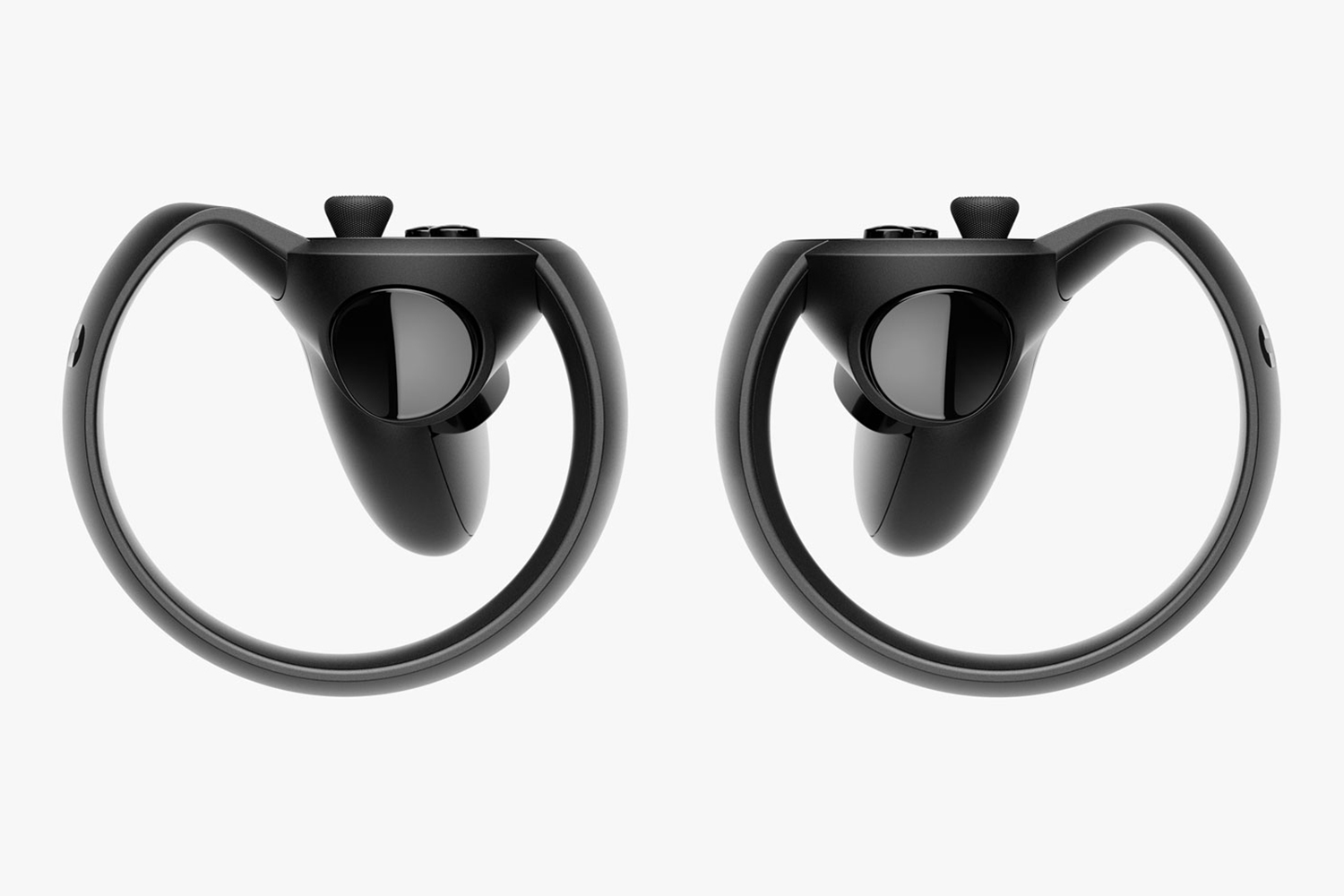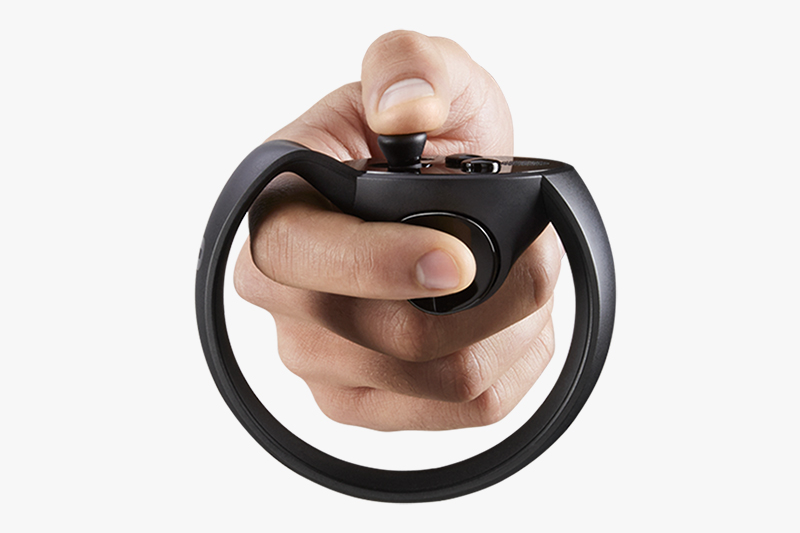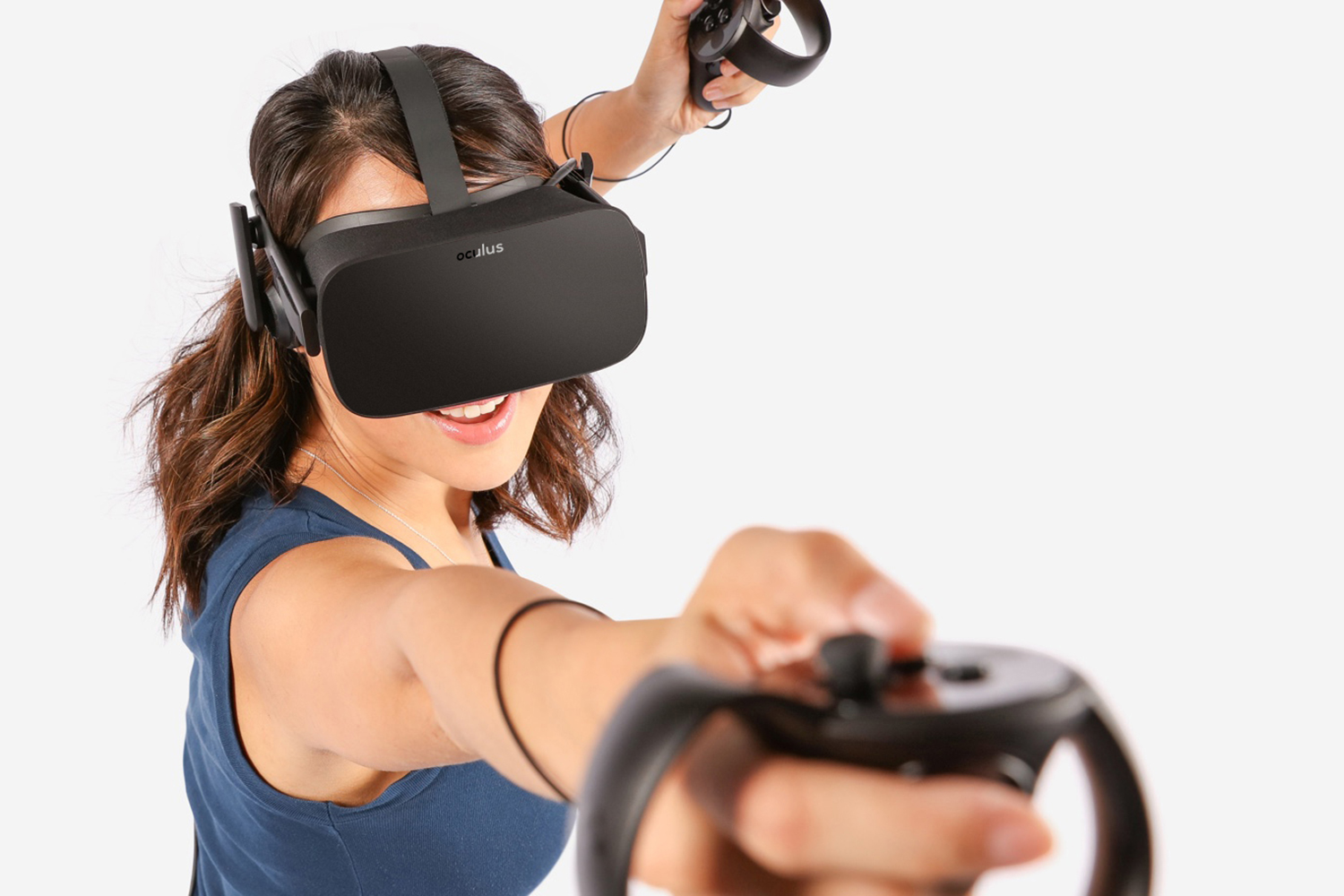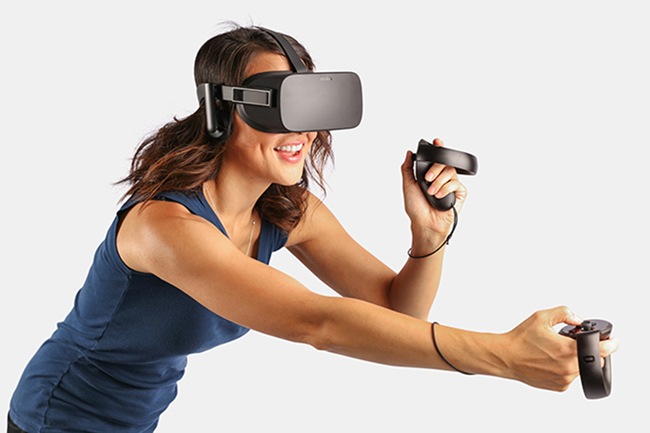The result can be unsettling. Turn around too far, and your hands will disappear, stick in place, or drift off in random directions. That’s in stark contrast to the HTC Vive, which sports a full 360 degrees of motion and control.
To solve that, Oculus has introduced a compromise. Setup a total of three constellation trackers – two in front, one behind – and you’re off and rolling in full, 360-degree room-scale. Except it’s not quite that simple.
What took so long?
There are two sides to every story, and that’s certainly true with Rift and room-scale.
The Oculus answer to questions about its lack of room-scale has always been simple – it’s not something users want to do. Clearing everything from a room except a computer desk and a tripod is a luxury that most people don’t have. According to a quote from Oculus founder Palmer Luckey obtained by Road to VR back in December of 2015, “You have people who have PCs that are powerful enough to run VR (or willing to buy one), then of that set, people who are interested in virtual reality.” Instead of trying to chase a market that might not exist, Oculus is first focusing on just putting headsets on faces.
There are two sides to every story, and that’s certainly true with Rift and room-scale.
To be fair, that’s a perfectly reasonable assumption. But it isn’t the whole story. The other major reason the Rift isn’t designed for room-scale VR is a technical limitation.
The Vive’s Lighthouse trackers are wireless. They send timing information back to the system as they blast the area with IR rays, and the headset and controllers have sensors that see those lines and report back their location to the computer. The Rift uses the opposite approach, with IR tags on the headset and controllers that the cameras see and send to the system. That means the Constellation trackers included with the Rift require a wired connection, and a fast one.
Why it won’t work
We’ve found that adding your own physical locomotion to the VR experience is a big deal for immersion, and it helps prevent nausea. But outside of a few games that have already been developed with room-scale in mind for the HTC Vive, like Job Simulator or Fantastic Contraption, it’s bound to fail. Luckey himself explains why in the very same interview.
“[Developers] don’t want to narrow it then down to people who want to clear out large spaces in their homes […] Most of the developers we’ve talked to don’t want to limit their beyond a subset of a subset of users.”
Luckey didn’t like the idea of room-scale VR because it meant splitting the user base. And that’s exactly what Oculus is now doing.
While many Rift owners will shell out $199 for the touch controllers, which include a second camera, there are some who won’t. That’s the first subset of Rift owners. Then, Oculus is charging $79 for an extra camera – not an unreasonable asking price at all, but one that a lot of users won’t bother with. That creates a third sub-set of users.
Suddenly, we have three categories of Rift owners, each of whom have a Rift with different capabilities. Developers are faced with a tough choice. They can either design for everyone, and drastically limit the experience. Or they can design for the more limited subsets of owners with Touch, or room-scale, and risk crippling their sales.
The way the news goes
It’s reminiscent of the Xbox Kinect. It was a well-intentioned peripheral with advanced capabilities, but without a large user base to draw from, few developers were tempted to build games or experiences that utilized it, much less relied on it. Had Microsoft included it at a low price as part of the Xbox 360 eco-system, it might have caught on. By adding it well into the Xbox 360’s life, and charging a high price, Microsoft hobbled Kinect before it had a chance.
Room-scale’s positive effect on the Touch controller can’t be overstated.
Oculus is staring down the barrel of the same virtual gun. A subset, of a subset, of a subset of users will have the time and space for room-scale, after a year of telling potential adopters that it’s a feature they don’t want. When they finally set it up and realize few games on the Rift store support it, they’ll warn fellow Rift users not to bother. And less room-scale owners means less developers working on games that support it.
Which is not to say that isn’t the right move for Oculus. The lack of 360-degree support only becomes more obvious as SteamVR games leverage the Vive’s unified hardware base, and its positive effect on the Touch controller experience can’t be overstated. But whether developers bother to enable Touch support in Rift games remains to be seen.
Editors' Recommendations
- Facebook unveils the Oculus Quest 2 VR headset
- Oculus Rift S gets a release date, pre-orders are now available








